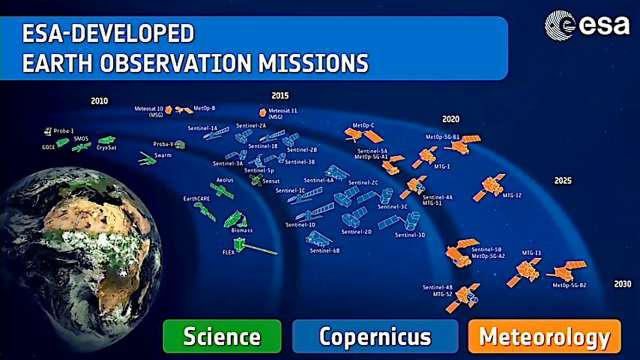Global environmental change has myriad influences on human health, and researchers are increasingly studying the connections between climate variation and health outcomes. Extreme heat events are becoming more frequent as the climate warms, leading to greater risk of heat-related illnesses and death1,2. Climate change also affects the transmission cycles of many infectious diseases and shifts the geographic distributions of important vector and host species3. Because climate is intimately connected with the hydrological cycle, changes in patterns of rainfall and resulting risks of flooding and drought influence the transmission of water-related diseases4. If the associations between environmental change and health outcomes can be elucidated, then monitoring climate variations can provide novel data on risk factors for environmentally sensitive diseases. These data can support the development of disease risk maps5,6, early warning systems for forecasting outbreaks of climate sensitive diseases7,8, and projections of the long-term effects that climate and land use change will have on human health9,10.

Earth-observing satellites produce an abundance of data that can be used in the study of human health. Measurements of reflected, emitted, and backscattered radiation track spatial and temporal variation in the environment, including vegetation, surface water, soil moisture, temperature, and precipitation. The resulting data provide information about habitats for vector and host species and environmental suitability for transmission of disease-causing pathogens11,12,13. Satellite remote sensing can also be used to map heat waves14, monitor air pollution15, and delineate human populations at risk of disease16. Most of these data are available at no cost and many have global coverage, making them particularly important for monitoring environmental health risks in low- and middle-income countries where the availability of ground-based environmental measurements is limited.
To implement climate services such as early warning systems for climate-sensitive diseases, it is essential to acquire, process, and integrate new data on a regular basis. Accessing geospatial environmental data requires navigating a vast landscape of available datasets, determining which are most suitable, and downloading large volumes of data. The data must be extracted from complex archive files, projected to new coordinate reference systems, processed to detect and fill data gaps, and summarized to generate relevant environmental indices at appropriate spatial and temporal scales17. Most epidemiological researchers and public health practitioners do not have expertise with satellite data and lack the necessary computational resources and specialized software. In many low- and middle-income countries, access to broadband internet is another barrier to working with large geospatial datasets18. There is a need for tools that facilitate the retrieval and use of satellite imagery for public health research and applications.
Cloud computing provides access to geospatial datasets along with processors, data storage, and software, as virtualized resources over the internet. Google Earth Engine (GEE) is a cloud-based system for analysis of satellite remote sensing and other gridded environmental data19. Computations are carried out via parallel processing in the Google Cloud, facilitating the analysis of very large datasets. A variety of data are available, including precipitation estimates, land surface temperature, and vegetation indices from Earth-observing satellites. Because data do not have to be downloaded, stored, and processed locally, GEE facilitates data access, processing, and summarization for end users with limited computational resources in low-bandwidth environments. GEE has used extensively for a variety of remote sensing applications, including public health20.
The goal of this study was to facilitate regular access to satellite data in support of the Epidemic Prognosis Incorporating Disease and Environmental Monitoring for Integrated Assessment (EPIDEMIA) malaria early warning project in Ethiopia21. To achieve this goal, we developed a GEE application called Retrieving Environmental Analytics for Climate and Health (REACH) to automate the required data processing steps and download results in a summarized format suitable for modeling malaria-environment relationships and predicting future malaria risk. We compared three different GEE implementations: 1) A data visualization and downloading tool with a menu-based user interface (UI) developed using the GEE code editor and JavaScript API, 2) An Earth Engine App that implemented this tool as a standalone web application, and 3) A Python package callable from other software to automate data processing and downloading. We assessed the strengths and limitations of each approach and considered how they can be extended to support other efforts to forecast climate-sensitive infectious diseases.




